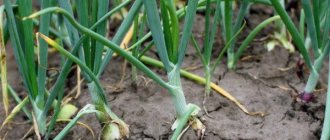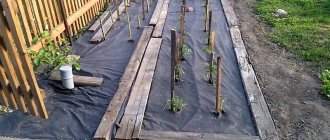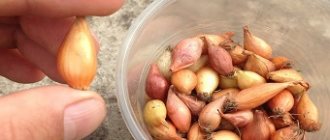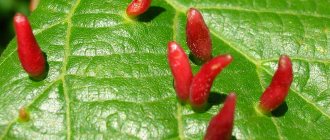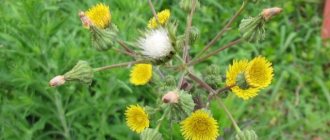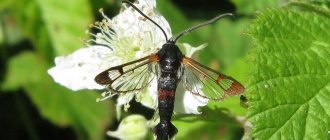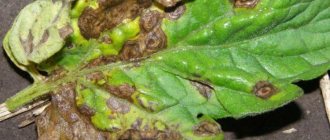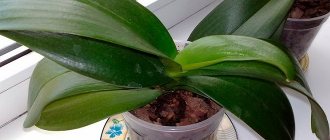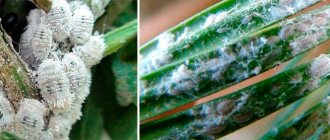Loading…
Much to the regret of summer residents, vegetable beds often bring not only joy, but also additional care, especially for eggplants - the beautiful purple fruits are sensitive to negative factors like no other. One of the most common problems when growing blueberries is yellowing of the foliage. The once large, juicy and green leaves acquire a yellow color, gradually wither and fall off. If measures to save and eliminate the problem are not taken in time, this may result in complete damage to the bush and its death, and hence loss of the harvest.
There may be several reasons why eggplant leaves turn yellow, and it is necessary to take active action only after they have been accurately identified.
So, the foliage of powerful eggplant bushes may turn yellow due to:
- lack of nutrients;
- fungal disease;
- pest damage;
- changes in climatic conditions;
- improper watering.
Possible causes of yellowing eggplant leaves
If a change in the color of a leaf plate is detected, you need to identify the cause of what is happening as soon as possible. This will stop the spread of the disease and save part of the crop.
Diseases
When eggplants are infected by pathogens and fungi, yellow or brownish spots appear on the leaves. The most common diseases are:
- Cercospora blight - due to toxins secreted by pathogenic fungi, the leaves turn yellow, starting from the edges.
- Verticillium - under the influence of the fungus, yellowness spreads along the veins of the leaves, the lower plates curl, and the stem turns brown when cut.
- Mosaic - yellow-green, acute-angled spots appear on the leaves, which increase over time. The fruits on the affected crop grow ugly.
- Fusarium is a fungal disease in which the plant stem turns brown and the leaves turn yellow and dry out. If you remove an eggplant from the soil, you will notice that its roots are covered with a pinkish coating.
- Yellowed plates with black dots - most likely, the sprouts were damaged by a spider mite feeding on the sap of the leaves.
Lack of macro- and microelements
Experienced agronomists know that the soil of central Russia contains microelements that are difficult for plants to absorb. To provide crops with adequate nutrition, they need to be fed .
What kind of substance eggplants need is clear by their appearance:
- Potassium . The edges of the leaves turn yellow, and the plate itself takes the shape of a boat. The situation can be corrected using potassium humate, potassium sulfate or herbal ash.
- Phosphorus . The leaves change color and begin to fly upward.
- Zinc . First of all, the lower leaf plates turn yellow, and then the upper ones.
- Calcium . It feels like the tips of the leaves are burned.
- Bor . The leaf blades turn yellow and curl.
- Sulfur . A lack of microelement manifests itself in the form of yellowing of the green mass.
Fertilizers are used in accordance with the instructions . Excessive feeding leads to withering and death of plants.
Bad soil
To get a good harvest, you need to take a responsible approach to the choice of soil.
There are special requirements for soil for eggplants.:
- Air permeability . To prevent the root system from suffering from oxygen deficiency, the soil must be loose and light. Such soil will not compact too much after watering.
- Moisture capacity . The soil should quickly absorb moisture and not allow it to evaporate too quickly. Peat practically does not absorb water, so you cannot plant eggplants in it.
- Fertility . The soil must contain organic matter, as well as macro- and microelements in an accessible form for absorption.
- Acidity . The optimal pH is from 6.5 to 7 units.
- Purity . The soil should be free of weed seeds, insect larvae and heavy metals.
Sunburn
If plants are too close to the phytolamp or stand in direct sunlight, burns may appear on their leaves. The optimal length of daylight for eggplants is 12 hours. At the same time, direct UV radiation causes irreparable harm to them.
Attention! Water the plants only at the roots, otherwise the drops on their leaves will increase the effect of sunlight.
Adaptation period
Seedlings planted in open ground take a long time to take root . For this reason, some leaves may turn yellow. Wait until the young plants take root, while still observing and caring for them.
It can be useful:
Instructions for growing eggplants from A to Z
How often to water eggplants
What are the diseases of eggplants in a greenhouse?
Prevention
The main measure to prevent yellowing of eggplant leaves is to provide the plants with good care. Eggplants quickly react to the gardener’s mistakes not only by yellowing of the leaves, but also by the falling of flowers and ovaries; the harvest can be saved only by providing the plants with all the necessary conditions.
Basic measures to prevent the appearance of yellow leaves in eggplants:
- Since it is difficult to maintain crop rotation in a greenhouse, it is worth updating the top layer of soil every few years. The soil for eggplants needs to be prepared: liming of acidic soils and loosening of heavy soils. Sand, rotted sawdust and rotted manure can be used as leavening agents. You need to add compost and turf soil to peat soil. During the growing season of eggplants, loosening the soil is very useful - this procedure not only ensures the flow of oxygen to the roots, but also reduces the risk of developing fungal diseases.
- In order for young eggplant bushes to adapt better and faster after planting in a greenhouse, it is necessary to harden the seedlings. Plants should be planted in a new place together with a ball of earth, being careful not to damage the roots.
- Eggplants need regular and sufficient soil moisture. At the initial stage of the growing season, plants are given 10 liters of water per 1 m2 once a week, during flowering - 12 liters per square bed twice a week.
- The difference between the temperatures of the soil and water for irrigation should not be large, otherwise the root system of eggplants will be damaged and rotting may begin. Watering with cold water also increases the risk of fungal diseases (anthracnose, powdery mildew, gray rot, copperhead and others).
- In a glass greenhouse where direct sunlight is available to the plants, or if additional lighting lamps are used, you should not irrigate the eggplants using the sprinkling method to avoid burns. Evening watering is preferable.
- At high temperatures, the greenhouse should be ventilated frequently. For cooling, you can place buckets of cold water between the rows, remembering to periodically replace the heated water.
On a note! You should not plant eggplants near the entrance to the greenhouse - in this place the plants are most strongly affected by the temperature difference inside and outside the shelter.
- Prevention of fungal diseases is especially important for eggplants in a greenhouse. It is recommended to pre-sow seed treatment (for example, soak the seed in a solution of potassium permanganate), disinfection of soil for seedlings, and preventive treatment of plants with folk remedies and biological products. Of the latter, Trichodermin will give a good effect if you add it to the holes for planting seedlings in a greenhouse (but the soil temperature should not be lower than +14°C; the drug is most effective at +18°C). 10 days after planting seedlings in closed ground, the first preventive spraying with fungicides can be carried out. Antrakol based on zinc is suitable.
Yellowing of leaves can be caused by a complex of reasons, which complicates diagnosis and selection of the correct treatment measures. Having discovered a disease or nutritional deficiency, it is necessary to critically evaluate the growing conditions, trying to provide an optimal environment for the plants. And vice versa, you should not rush to feed if the agricultural technology is not followed - first of all, you need to improve the conditions. This precaution will prevent excess nutrition of eggplants.
Why do the lower leaves turn yellow?
The lower leaf blades turn yellow most often. This is due to the fact that most of the nutrients are spent on the development of the plant's root system , and the greenery does not have enough nutrition, so it begins to die. In addition, many pests live in the top layer of soil. When insects begin to eat a bush, they move from bottom to top.
Why do seedlings turn yellow?
Seedling leaves may turn yellow regardless of where the crop is growing: on a windowsill or in a greenhouse. This may be due to the following reasons :
- Lack of nutrition . If there are few micro- and macroelements in the soil, only the upper leaves have enough vital substances, and the cotyledon plates gradually dry out. In this case, it is necessary to increase the soil fertility with the help of a special seedling fertilizer, which is sold in a specialized store. Nitrogen is especially useful for young plants.
- Infection of planting material . To be sure that the seeds are not affected by pathogens, they must be treated with a manganese solution before planting.
- Excess sunlight . If the seedlings are exposed to the rays of the scorching sun, their young leaves may dry out.
- Soil acidification . Eggplants need plenty of watering; they cannot tolerate drought. But if there is too much water and it stagnates, the roots rot. If this process has already begun, stopping watering for a couple of days is not enough. Fungi or pathogens have already appeared in the soil, so it is replaced and the pots are treated with potassium permanganate.
Eggplant leaves are withering: urgently saving the situation
It’s annoying to see how yesterday’s healthy plants’ leaves wither. In this case, you urgently need to save the situation, and first of all, find out why the eggplant leaves are withering.
Eggplant leaves wither: looking for the cause
Gardeners I know often ask me why eggplant leaves wither. I once encountered this phenomenon too. There may be several reasons for this behavior, namely:
- Damage to the root system, I blame the mole cricket for this, but mice can also take over the garden bed. I recognize the mole cricket by its paired passages near the plants; they are sometimes hidden under the leaves;
- Vegetables react to lack of moisture with limp leaves;
- Watering with cold water;
- The settlement of thrips or aphids that extract juice from the leaves is also characterized by limp leaves;
- Excessive moisture can cause drooping leaves;
- Soil stuffed with fertilizers will not be to the liking of eggplants;
- Frosts can cause eggplant foliage to wilt;
- Increased acidity of the soil will lead to sagging foliage;
- Troublesome Fusarium and Verticillium wilt causes foliage to wilt, yellow, and then die.
How to help eggplants with limp leaves
To understand what caused the leaves to wilt, I take a closer look at the plants. If the foliage is green, it means there are no pests or diseases on the vegetables.
If I find the passages of a mole cricket or shrew, I lay out the poison.
I check the soil moisture. On dry lands, when moisture evaporates quickly, it is important to use mulching, which will both retain moisture and make the soil loose. Periodically, I spill the mulch with phytosporin so that the lower layers do not become a haven for fungal diseases.
If the soil is acidic, the following recipe will do: I dilute a glass of ash in a bucket of liquid and let it sit for about five days, then water the plants. It’s also a good idea to add bone meal between the vegetables, and then mulch with compost.
If pests attack, I spray the vegetables with a solution of karbofos or actellik. When the ovaries have already begun to grow, I switch to environmental spraying:
- I prepare a solution with tomato tops: I chop up the leaves and shoots and add water, leave for a couple of days and spray;
- Datura infusion also helps get rid of harmful insects;
- Garlic infusion also helps against aphids.
With fusarium wilts, phytosporin helps in the initial stages; I water the plants with the solution from a watering can directly over the leaves.
Why do fruits not turn blue, but turn yellow?
Most eggplant varieties turn purple or dark blue when ripe. Only some varieties of the crop, brought to us from North America or Asia, have a light green or white-green tint. But if the color of the peel is unusual for the variety, this should alert the summer resident.
Eggplants are capable of accumulating the toxic alkaloid solanine. This substance not only makes the fruits taste bitter, but also gives them a green, yellow or brown color. A common reason for eggplant discoloration is overripening . But sometimes the crop turns yellow due to excess nitrogen or lack of sunlight. In this case, its development slows down and the fruits become lighter.
In dry weather, ripe eggplants may turn yellow or green. To avoid damage to the crop, provide the plants with regular watering.
Main reasons
Everything is quite predictable - this is incorrect watering, lighting or fertilizing regime. But sometimes more serious problems arise, and the beds are attacked by pests and diseases. With the same yellowness, plants react to stress after a change in conditions, unexpected frosts or too harsh treatment.
What to do
If a spider mite is found on a plant, it is treated with drugs such as Actellik, Fitoverm and others. Natural remedies include an infusion of finely chopped garlic or onion peel.
Potassium fertilizers have an antifungal effect . But if a fungus or viral infection has already penetrated the root system, the diseased plant can only be dug up and burned to avoid the spread of the disease. The soil is then disinfected with a solution of potassium permanganate. To save healthy specimens, they are treated with benzimidazole.
If burns appear on the leaf blades , move the seedlings to a more shaded place and feed them until they are completely restored.
Someone is eating our eggplant instead of us
The problem of dividing the harvest between the inhabitants of the garden and its owner always arises, and is very acute. You'll miss the moment, and right away there will be a Colorado potato beetle in an embrace with a mole cricket, ants with a herd of aphids, a mite will entangle everything in a web, and, to make life more fun, the mole will come. This is unpleasant, annoying, even insulting, but the diagnosis and actions, if not simple, are at least understandable: collect the beetle, drive away the ants, wash off the mite along with the cobwebs with soap suds. The mole, of course, won’t eat the eggplants, but it will dig up the tunnels and tear off all the roots, so scare it with an ultrasonic scarecrow and, to be sure, put a special net under the bed. It is easy to determine which of these pests is in charge, because the pests themselves are visible to the naked eye.
It’s more difficult if some sneaky fungus starts up. It is easier to distinguish it from other pests, but there are many types of fungi, and it is very easy to confuse them with each other. A characteristic feature of fungal diseases is small yellow and brown spots on the leaves . Theoretically, by the nature of the stain one can determine what kind of disease has affected the plant, but the inexperienced eye will not see much of a difference. Names of such diseases:
- late blight;
- Alternaria blight;
- cercospora;
- anthracnose;
- fusarium;
- verticillium...
Yellow spots on an eggplant leaf are foci of fungal infection
You can fight them with drugs that contain live cultures of bacteria or spores of antagonistic fungi . They will suppress pathogenic microorganisms. Such drugs include:
- Fitosporin;
- Trichodermin.
They should be used repeatedly and strictly according to the instructions, but the fruits can be collected and eaten even on the day of processing, after washing them with water.
The most offensive scourge for a gardener is the tobacco (less commonly, cucumber) mosaic virus . Parts of the leaf lighten and turn yellow, but along the contour of the spots remain green. It really looks like a mosaic. But it’s a shame, because such a plant can only be uprooted and burned.
Eggplant leaves infected with the tobacco mosaic virus look elegant, but the plant, alas, must be destroyed
Preventive measures
To prevent damage and death of the crop , follow these recommendations:
- containers for seedlings must have holes from which excess moisture will drain into the tray;
- when watering, liquid should not collect on the leaves;
- before planting, the seeds are washed with a non-concentrated solution of potassium permanganate, and pots and garden tools are also disinfected;
- when transplanting a crop, its roots should not be exposed;
- the soil is regularly loosened to allow air to reach the roots;
- Do not plant eggplants in places where moisture often accumulates;
- Damaged leaves are removed immediately.
Eggplant seedlings do not grow
After picking eggplant seedlings from a common box into individual pots, a problem may arise due to which the leaves begin to wither.
This is caused by damage to the roots during transplantation. In this case, the drug “Kornevin” will save you. But before carrying out the procedure, inspect the roots. If they turn brown, it is better to transplant the eggplant into a large container and add the drug.
Eggplants are capricious in the wind, even the lightest. Therefore, it is better to keep seedlings away from windows. If there is no such place, then for the time of ventilation it is better to move the box with vegetables to another warm place.
On forums you can often come across questions such as “ Why do eggplants fall?” " It is the wind that causes this problem. Therefore, before planting the plant in open ground, it should be hardened off. During this period, do not forget about fertilizing, which will strengthen the seedlings for future “living” on the street. It is better to use ammonium nitrate, superphosphate and potassium salt as fertilizer.
Tips and recommendations from experienced summer residents
For good acclimatization of seedlings, the seeds are planted in a mixture of ready-made soil and soil taken from the garden. But such soil may contain pests and pathogens. The soil is disinfected in several ways :
- Steaming . The soil is placed in a colander and kept over a pan of boiling water for about ten minutes, stirring occasionally. After this, the soil is cooled.
- Etching . The soil is watered generously with a weak solution of potassium permanganate.
- Freezing . In the cold season, when the air temperature does not rise above -15°C, a container with pre-prepared soil is placed outside for several days. Then they are brought into a warm room for five days to allow the larvae and seeds to wake up, and again taken out into the cold. This procedure is repeated three times.
- Calcination . The soil must be poured onto a metal tray in a layer about 5 cm thick and placed in an oven heated to +70-90°C. It is important to ensure that the temperature does not rise above the set values. When the earth warms up, it is removed from the oven and left until it cools completely.
Seeds collected from healthy, fully ripened fruits are less susceptible to various diseases. The seed material is thoroughly dried and stored in air-permeable bags.
Important! Do not plant eggplants near trees, buildings, fences, or near tall, bushy crops that block the sun. Take care of proper crop rotation. Do not plant seedlings in a bed where tomatoes, eggplants or peppers grew last year.
